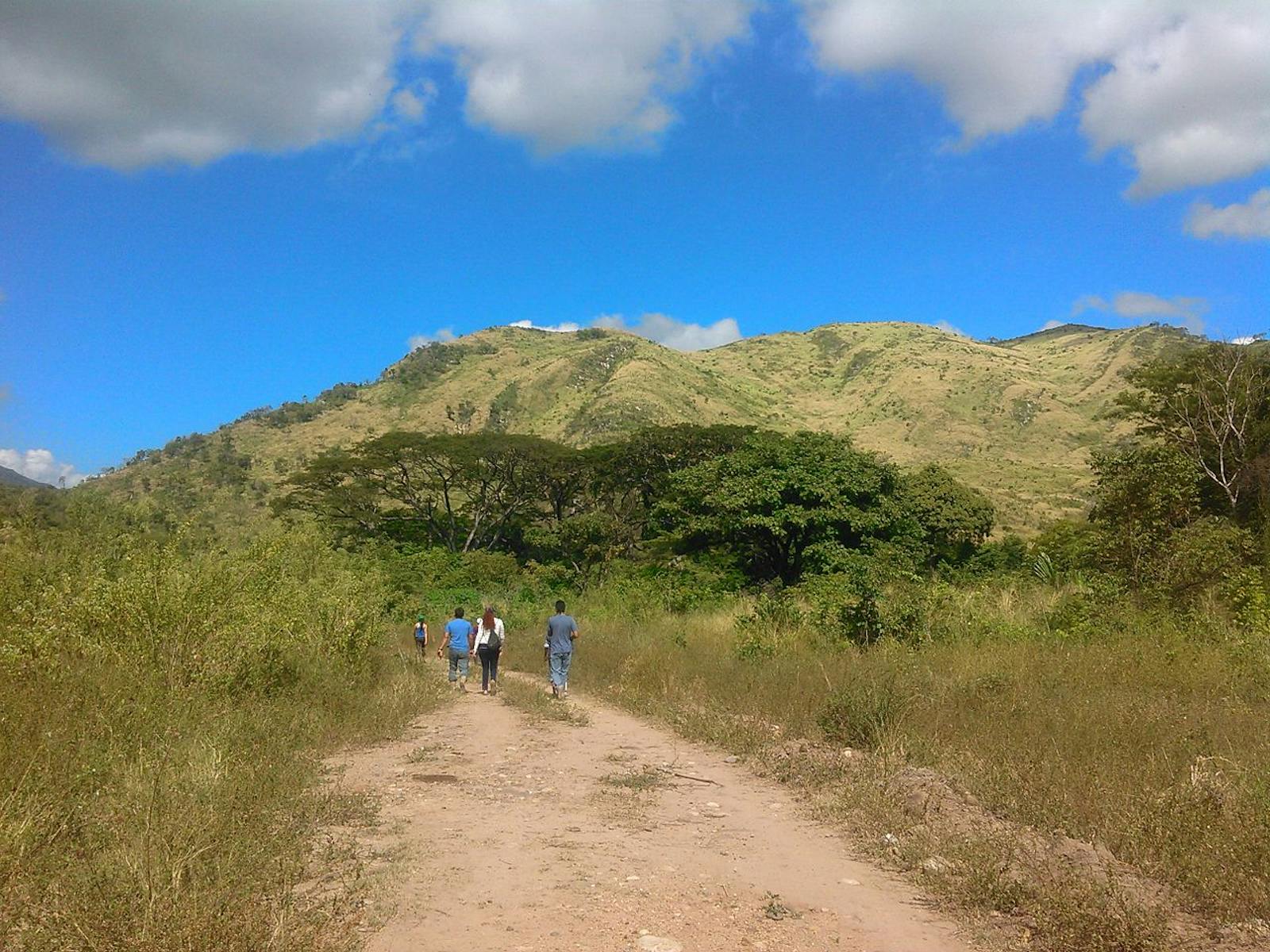Maracaibo Dry Forests
The ecoregion’s land area is provided in units of 1,000 hectares. The protection goal is the Global Safety Net (GSN1) area for the given ecoregion. The protection level indicates the percentage of the GSN goal that is currently protected on a scale of 0-10.
Bioregion: Venezuelan Coast (NT23)
Realm: Southern America
Ecoregion Size (1000 ha):
3,028
Ecoregion ID:
539
Conservation Target:
39%
Protection Level:
8
States: Venezuela
The endangered recurve-billed bushbird is known only in northern Colombia and the extreme northwest of Venezuela, including the Maracaibo Dry Forests ecoregion. It feeds primarily on insects by pecking open hollow stems and branches with its extraordinary, upward curving bill that makes its appearance unmistakable. This unique species inhabits dense stands of secondary forest, bamboo, and dry forest, and is so elusive that for 40 years significant effort failed to find this bird until 2004 when one was finally spotted in the Sierra de Perijá in Venezuela.
.jpeg)
The flagship species of the Maracaibo Dry Forests is the recurve-billed bushbird. Image credit: Creative Commons
The Maracaibo Dry Forests are located in the northwestern coastal area of Venezuela. The majority of the ecoregion is located in the state of Zulia in the Maracaibo Basin; the remainder lies in the state of Trujillo. The entire ecoregion extends through the coluvio-alluvial plains that range in elevation from 0–500 m. Annual temperature ranges from 16–26°C. This area receives less than 1,000 mm of rain annually and is strongly seasonal. The terrain is flat and the surrounding hills and mountains become transitional moist forests at higher elevations.
The area is traversed by rivers that flow into the Maracaibo Basin from the surrounding mountains. There are also patches of mangrove habitat interspersed along the shores of Maracaibo Lake within the interior of the ecoregion. After fifty years of human activities in this area, little is left of the natural dry forests. The remaining native vegetation consists of small isolated patches that include savannas with trees and deciduous dry forests. Some of the species found in the fragmented areas include the fruit bearing plant nanche, threadleaf beakseed, a palm Copernicia tectorum, verawood, helicopter tree, wild crapemyrtle, and dagger cactus.
A number of native birds of northern Venezuela are restricted to small dry areas, including this ecoregion’s Maracaibo Basin. Of note are the pygmy swift, vermillion cardinal, Tocuyo sparrow, slender billed inezia, and white whiskered spinetail. Endemic terrestrial mammals characteristic of this ecoregion and of others in dry forests in Colombia and Venezuela, are the Guajira mouse opossum and Hummelinck's vesper mouse. The opossum is well adapted to dry habitats, and is also found in deciduous forest, while the vesper mouse is mainly found in sandy grasslands.
There are few and very small natural habitats remaining due to the high population and intensive land use in the ecoregion. Grazing has especially affected the southeastern and southwest dern areas of Lake Maracaibo. The main impact on the natural vegetation has been caused by shifting cultivation, and by an extensive network of roads surrounding Lake Maracaibo. The Maracaibo Dry Forests fall within the principal oil producing region of Venezuela.
Continuous conversion of remaining natural habitat in the southern part of the Basin is of great concern especially without any protected areas to keep any remnants of this ecoregion safe from conversion. Also of major environmental concern is the recent findings that some of the rivers that traverse the Basin and flow into the Maracaibo Lake are polluted with pesticides and fertilizers. The greatest threat to this ecoregion includes the total destruction of this habitat type including all unique vegetation and fauna associated with it.
The priority conservation actions for the next decade are to: 1) expand the coverage of protected area network within the remaining remnants of the ecoregion; 2) establish a network of wildlife corridors connecting areas; and 3) restrict pesticide usage and pollution output from the agriculture industry in the area.
Citations
1. Locklin, C. 2018. South America: Northwestern corner of Venezuela. https://www.worldwildlife.org/ecoregions/nt0222 Accessed November 16, 2018.
2. Huber, O., and C. Alarcon. 1988. Mapa de vegetación de Venezuela. 1:2,000,000. Ministerio del Ambiente y de los Recursos Naturales Renovables, Caracas, Venezuela.
3. Huber, O. and D. Frame. 1988. Venezuela. In D. Campbell and H. D. Hammond (editors), Floristic Inventory of Tropical Countries. The New York Botanical Garden, Bronx.
4. BirdLife International 2017. Clytoctantes alixii (amended version of 2016 assessment). The IUCN Red List of Threatened Species 2017: e.T22701358A110784748. http://dx.doi.org/10.2305/IUCN.UK.2017-1.RLTS.T22701358A110784748.en. Accessed November 16, 2018.



